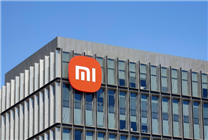Xiaomi’s Strategic Shift: Fewer Models, Greater Impact
Summary:
- Xiaomi is reducing the number of smartphone models released, focusing on a more streamlined product line.
- The company aims to enhance user experience through extended software support and improved ecosystem integration.
- This strategy marks a shift from a hardware-centric approach to a comprehensive ecosystem that includes smartphones, smart vehicles, and home devices.
In the past year, significant changes have emerged in Xiaomi’s product strategy. Gone are the days of launching an overwhelming array of models across various price ranges. Instead, Xiaomi has pivoted towards a more refined product line with clearer brand positioning and a dedicated focus on software support and ecosystem collaboration.
Transition from "Machine-Sea Tactics" to a Premium Strategy
During the early 2010s, Xiaomi rapidly captured market share through its high-performance, affordable devices, especially in emerging markets like India and Southeast Asia. The "machine-sea tactics," a strategy characterized by the release of numerous models to appeal to diverse consumer segments, once brought Xiaomi to the top of sales charts. However, the diminishing returns from this approach prompted a reevaluation of their business model.
Recent financial data indicates that while the global smartphone market continues to grow, Xiaomi’s smartphone revenue dipped by 2% year-over-year. In stark contrast, the revenue from its AIoT (Artificial Intelligence of Things) segment surged to approximately $5.3 billion, marking a 44.7% increase. Furthermore, their emerging smart electric vehicle business saw a single-quarter revenue exceeding $2.75 billion. These insights illustrate that smartphones are now a central node in Xiaomi’s broader HyperConnect ecosystem rather than the sole growth engine.
Xiaomi’s CEO, Lei Jun, emphasizes a long-term vision focused on the interplay between smartphones, smart vehicles, and smart homes. The objective is to enhance each device’s value not just through sales but by its potential for integration within a cohesive ecosystem, thus ensuring a consistent user experience and greater lifetime value for consumers.
Enhanced Software Support: A Key Factor in Streamlining
Another crucial element prompting Xiaomi’s model reduction is an enhanced software support strategy. Starting in 2024, the company has committed to providing up to four major operating system upgrades and six years of security updates for its flagship and mainstream phones like the Xiaomi 15 and REDMI Note 14 series. This initiative seeks to mirror the high service standards set by industry leaders such as Apple and Samsung, ultimately boosting user loyalty and device retention.
However, this long-term software maintenance requires substantial engineering resources. Continuing to churn out numerous devices annually—including various regional adaptations—could hinder consistent and timely updates, particularly after the introduction of HyperOS, which demands more sophisticated system architecture across devices.
In essence, releasing fewer models allows each device to have a longer life cycle and more stable performance, a responsible choice that prioritizes user experience.
Lessons from Market Performance: The Case of India
One of the compelling catalysts for Xiaomi’s strategic shift comes from its experiences in India, where shipments plummeted by 42% year-over-year, resulting in a steep drop in market share. This decline highlighted several structural inefficiencies in their earlier model: overlapping product lines, regional differences in ROM, and a difficulty in breaking into higher-end markets.
The confusion stems largely from having multiple series, such as Xiaomi, Redmi, and POCO, offering similar functionalities. Consumers often found it hard to make informed choices, leading to decision fatigue.
Confronted with these challenges, Xiaomi is adopting a clear stratification strategy—Redmi for the mass market, the primary Xiaomi brand for mid-to-high-end segments, and POCO for performance enthusiasts. This approach aims to unify their global product architecture, simplifying operations and enhancing core user experiences.
Slimming Down the Product Line
Xiaomi’s focus is exemplified by its recent decision to reevaluate non-core products, confirming it will not launch the MIX Fold 5. Despite the interest in the Civi 5 Pro, its global rollout has been suspended due to potential internal competition with existing lines.
Folding phones, with their high development costs and complexities, do not yield significant economies of scale. By concentrating on areas promising greater ecological synergy, such as the integration of smart devices and AI, Xiaomi can better allocate resources.
The Four Pillars of Xiaomi’s New Era
The crux of Xiaomi’s revised strategy centers around four foundational pillars:
- Extended Software Life Cycle: Boosting user retention through superior software support.
- Enhanced Ecological Integration: Utilizing HyperOS to ensure seamless functionality among devices.
- Elevated Hardware Standards: Emphasizing durability and user experience over mere technical specifications.
- Global Strategy Consistency: Minimizing regional discrepancies to streamline operations and enhance brand integrity.
This transformation may impact short-term sales; however, it is designed to eliminate low-end competition, cultivate a sustainable high-end brand image, and position Xiaomi favorably in the global smart ecosystem.
Conclusion
In today’s slower-growing smartphone industry, simply releasing a larger number of models is no longer a viable strategy. Xiaomi’s recent shifts affirm a critical business truth: real growth comes not from volume, but from the quality and impact of what is done right.
By narrowing its product focus, extending software support, and enhancing ecosystems, Xiaomi is transitioning from a traditional phone manufacturer into a forward-thinking technology company dedicated to smart living solutions. This shift, while seemingly a reduction, is actually a robust repositioning aimed at expanding ecological value and enhancing user trust.










